JAJSHU4B August 2012 – August 2019 TPS63036
PRODUCTION DATA.
- 1 特長
- 2 アプリケーション
- 3 概要
- 4 改訂履歴
- 5 Pin Configuration and Functions
- 6 Specifications
- 7 Detailed Description
- 8 Application and Implementation
- 9 Power Supply Recommendations
- 10Layout
- 11デバイスおよびドキュメントのサポート
- 12メカニカル、パッケージ、および注文情報
8.2.3 Application Curves

| VOUT = 2.5 V/ 4.5 V |

| VOUT = 3.3 V |

| VOUT = 2.5 V, IOUT = 10 mA/100 mA/500 mA |
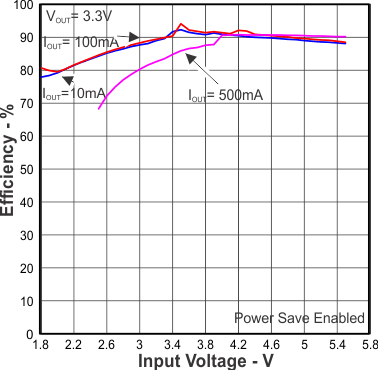
| VOUT = 3.3 V, IOUT = 10 mA/100 mA/500 mA |
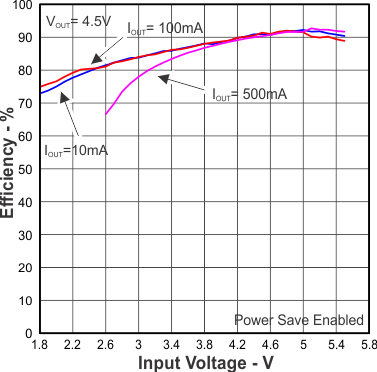
| VOUT = 4.5 V, IOUT = 10 mA/100 mA/500 mA |
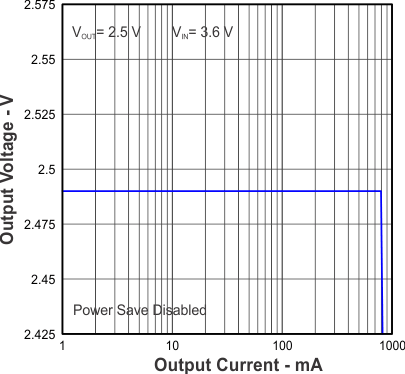
| VOUT = 2.5 V |
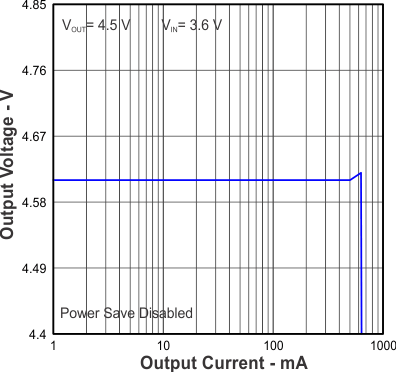
| VOUT = 4.5 V |
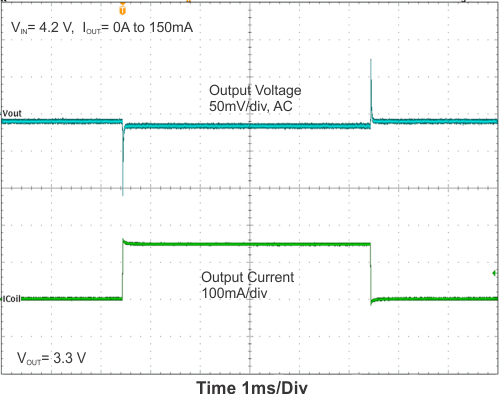
| VIN > VOUT, Load Change from 0 mA to 150 mA |
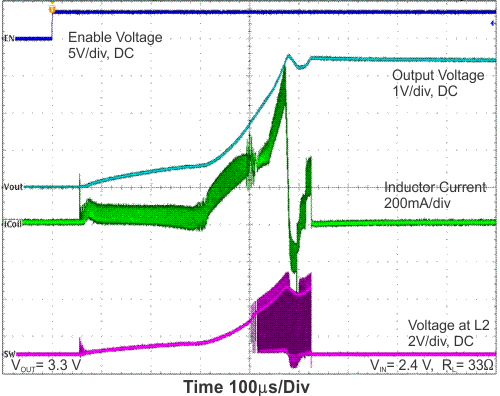
| VOUT = 3.3 V, VIN = 2.4 V, RL = 33 Ω |

| VOUT = 2.5 V/ 4.5 V |

| VOUT = 3.3 V |
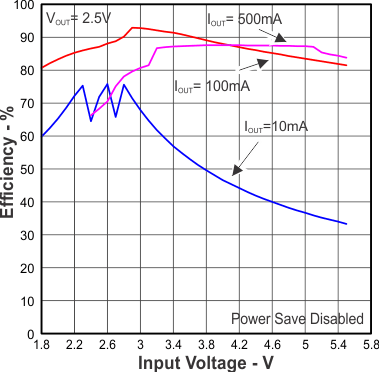
| VOUT = 2.5 V, IOUT = 10 mA/100 mA/500 mA |
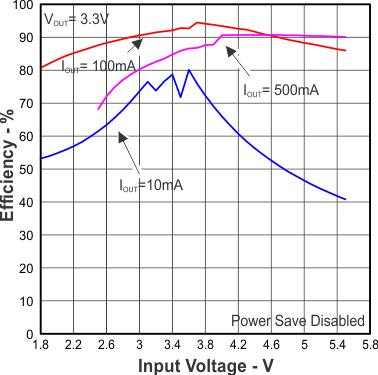
| VOUT = 3.3 V, IOUT = 10 mA/100 mA/500 mA |
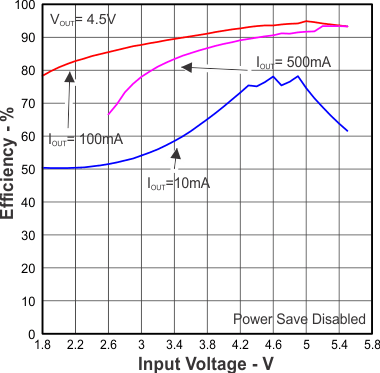
| VOUT = 4.5 V, IOUT = 10 mA/100 mA/500 mA |
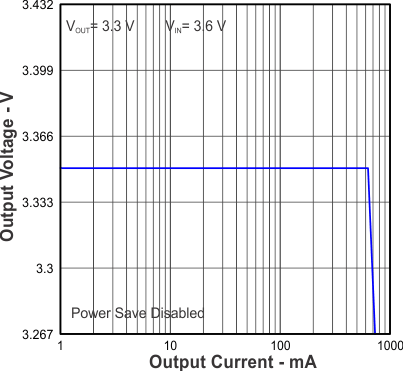
| VOUT = 3.3 V |
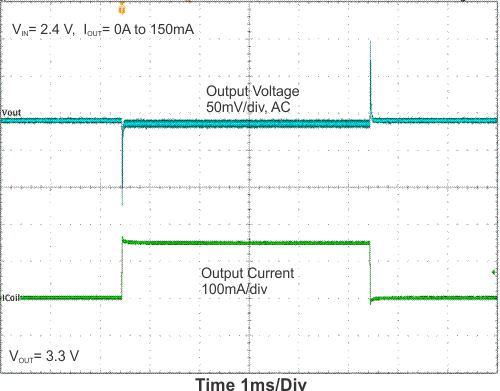
| VIN < VOUT, Load Change from 0 mA to 150 mA |
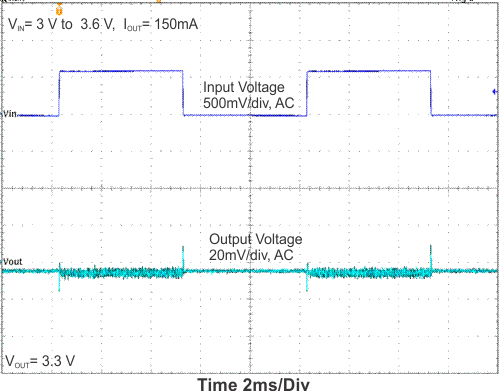
| VOUT = 3.3 V, IOUT = 150 mA |
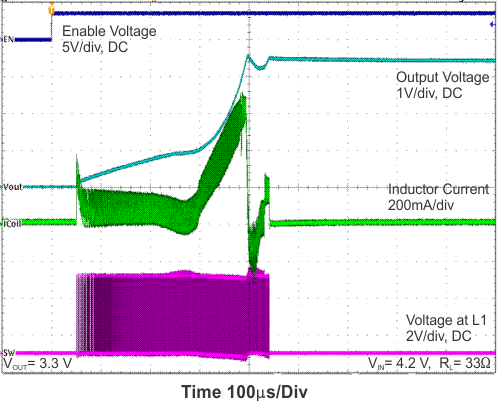
| VOUT = 3.3 V, VIN = 4.2 V, RL = 33 Ω |